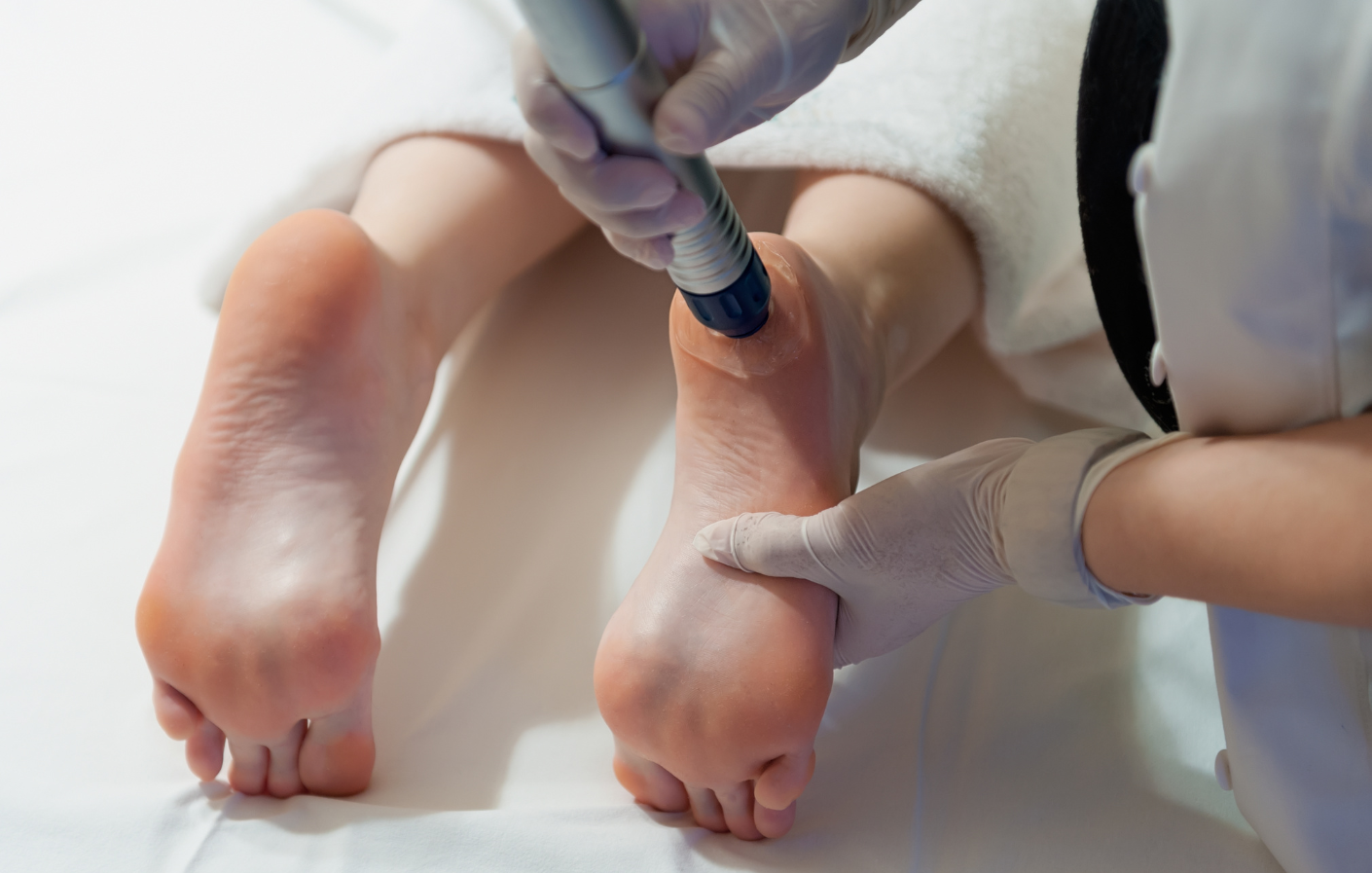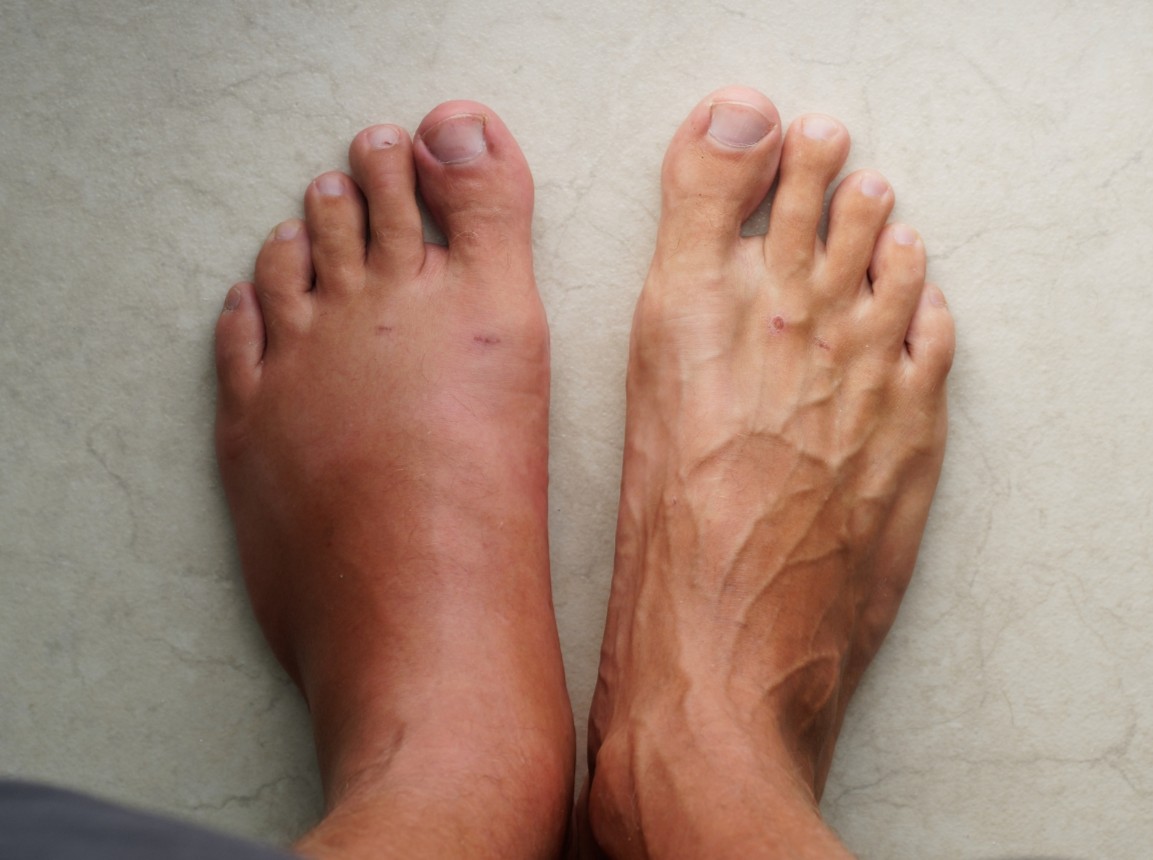

Heel pain is a big problem. Here in Auckland, New Zealand, and worldwide… the rate of heel pain is growing, along with the rate of
people who are regularly in pain or discomfort. With heel pain being one of the most common problems that our podiatrists see and treat here
at Perform Podiatry, we’re excited to now offer a fantastic, proven treatment for heel pain from a wide range of causes (like plantar
fasciitis and Achilles pain) that is changing lives by eliminating pain: it’s shockwave treatment.
Don’t worry! While “shockwave” sounds daunting, it’s anything but. It’s actually an evidence-based treatment that is used extensively to help heal and repair a range of injuries affecting tendons, muscles, and bones. Here’s how we use shockwave to treat heel pain for good - even if it’s been bothering you on and off for years.
Otherwise known as radial pressure wave therapy, shockwave therapy is a device held by our podiatrists and positioned against your foot or leg at the site of your injury. When switched on, it generates acoustic (sound) waves that travel beneath the skin to the damaged tissues. It creates a host of effects that work to accelerate healing and get you out of pain much faster and more effectively.
Shockwave has continually proven its effectiveness with heel pain, and many studies have shown excellent results. When it comes to Achilles pain, it has been shown to reduce pain “significantly” (which is a great outcome from a study) and contribute to an excellent or good recovery. These results were found in longstanding (chronic) Achilles tendinopathy, too, so even if you’ve been struggling on and off for years with little success, we recommend trying shockwave.
Similarly, studies have shown that shockwave therapy is effective for plantar fasciitis, considering a person’s pain, function, and quality of life—exactly what our patients are concerned with.
While we’re talking about heel pain today, it’s worthwhile mentioning that shockwave is also used extensively on the lower limbs (and upper limbs, for that matter). It is used for treating:
What does this mean? Shockwave isn’t one of those “cutting edge” treatments that’s brand new to the market and may have side effects that aren’t yet well known or understood yet. It’s actually been used for musculoskeletal repair since the 1990s - and it’s conveniently now been turned into smaller devices (yet just as effective) and so become more accessible to health clinics who choose to invest in this treatment for their patients.
While it’s always your choice whether or not to use shockwave therapy to help with your heel pain or to pursue a different treatment
route, we first must check that shockwave therapy would actually be beneficial for you. We’d never use it if we weren’t certain
that there is a strong chance it could help (backed by research and evidence).
Shockwave is actually widely used and preferred as a treatment because it’s non-invasive, meaning it doesn’t penetrate or cut into the skin. This means it doesn’t carry the risks that an invasive treatment, like surgery, does for infection and recovery. Which comes with many benefits:
After it has been confirmed that you’re eligible for shockwave treatment for your injury and personal circumstances, and you confirm that you want to go ahead with the treatment, we’ll palpate around the injured area, identifying the target spots where the shockwave handpiece will be positioned. Then:
The number of shockwave appointments you’ll need really does depend on what your injury is, how severe it is, and how well you adhere to your overall treatment and recovery plan. We’ll be able to give you an estimate during your first appointment with us and we expect to see a reduction in your pain and symptoms every week. If we don’t see these results and you’ve completely complied with the rest of your specific management plan, we won’t continue with the treatment and will reassess the best way forward clinically for your recovery.
When we use shockwave, we apply the handpiece to an area that is already damaged and injured. So, you may experience some tenderness during your treatment, although some people experience very menial or no discomfort. Any symptoms during the treatment are very short-lived and make sense - I mean, we are pressing against injured tissues, so it’s pretty logical that you may feel some discomfort. One of the great things about shockwave is that it’s completely under the control of your podiatrist - we have full control over the settings and intensity, and if, for whatever reason, it is too intense for you, we can adjust the levels accordingly.
Before you have shockwave treatment, we need to assess your injury and know your diagnosis so that we can confirm whether shockwave therapy
is indicated for you and your circumstances or if another treatment will yield the best results.
To start, book your initial appointment online here or call us on 09 523 2333.

We’ve all had those days — you come home after hours on your feet, kick off your shoes, and notice your ankles look puffier than usual.
Swelling in the feet, ankles, or legs (known medically as edema) isn’t always a reason to panic. It can be as simple as a
salty lunch or a long flight.
But what if it’s happening more often — or seems to be getting worse? Swelling can sometimes be a sign of something more serious. Here’s
what could be going on and when to check in with your doctor.
.jpg)
Every year on October 8th, the world celebrates International Podiatry Day - a day dedicated to
raising awareness about foot health and the vital role that podiatrists play in our overall well-being.
Keeping your family on their feet and helping them to walk, run, play and exceed their goals is why we love getting up in the morning.
Ground Floor, One Health Building
122 Remuera Rd, Remuera
Auckland 1050, New Zealand
| MON - FRI | 7:30am – 6:30pm |
| SAT | 8:30am – 4:30pm |
| SUN | Some availability |
Make an Appointment
Online Schedule
Our virtual receptionist is available 24/7 to help with general questions, booking requests, and clinic information, even when our team is busy, or it's after hours.
Whether you're calling us or using our website, you'll get fast assistance any time of day. And if your query needs a personal touch, a member of our team will follow up as soon as possible.
If you’d like to see a podiatrist who speaks your preferred language, just give us a call and we’ll help you book.